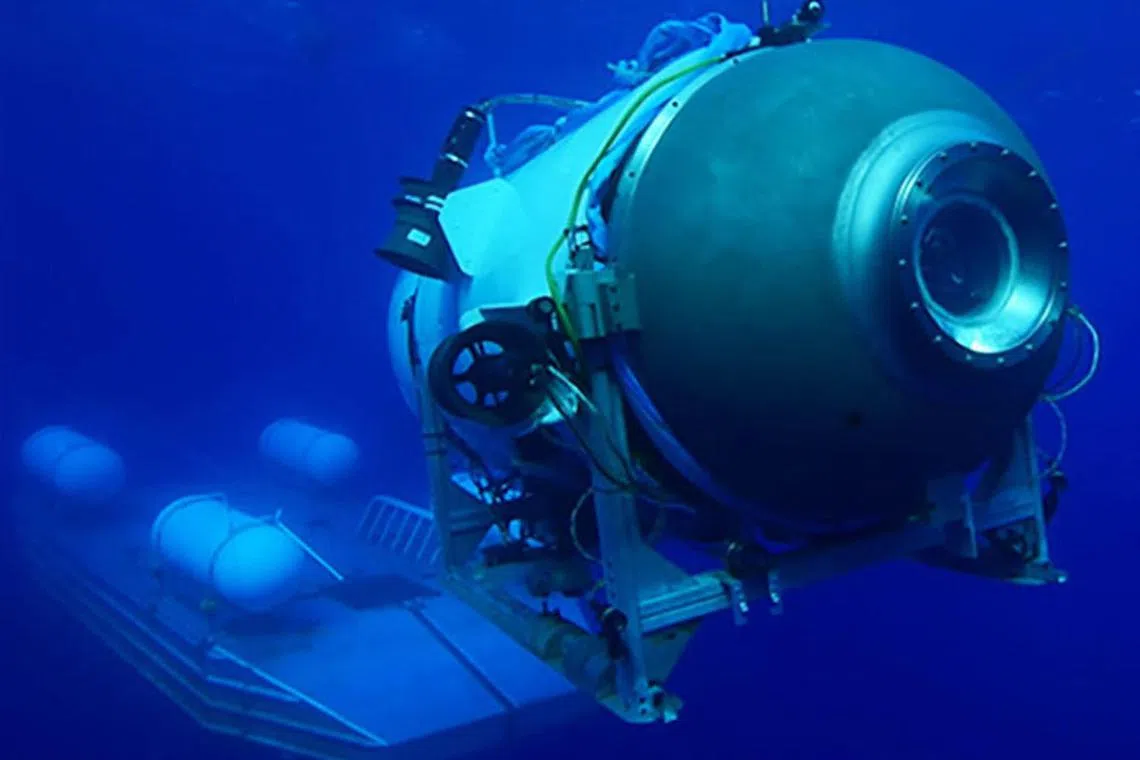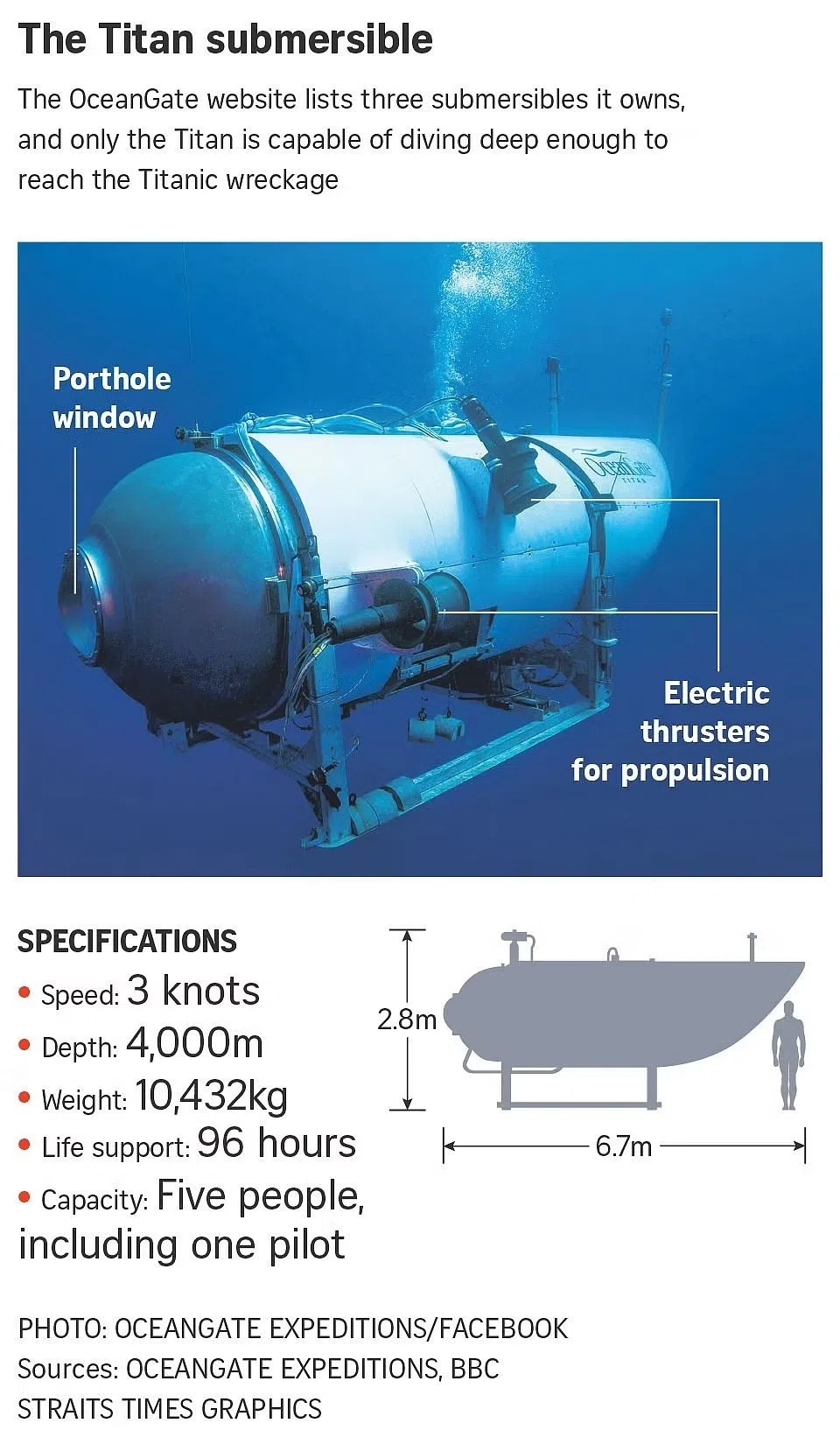Titan submersible: What is a ‘catastrophic implosion’?
Sign up now: Get ST's newsletters delivered to your inbox

The Titan was designed to sustain the extreme pressure at the depth of the Titanic.
PHOTO: AFP
Follow topic:
BOSTON - A “catastrophic implosion”, such as that believed to have destroyed the Titan submersible
The remains of the Titanic rest on the seabed in the North Atlantic at a depth of some 3,800m.
At sea level, atmospheric pressure is 14.7 pounds per square inch (psi).
Water pressure at the depth where the ocean liner lies is equivalent to around 400 atmospheres, nearly 6,000 psi.
As a comparison, the bite of a large great white shark exerts a force of nearly 4,000 psi, according to the Scientific American magazine.
In an implosion caused by a defect in the hull or for some other reason, the submersible would collapse in on itself in milliseconds, crushed by the immense water pressure.
Death would be virtually instantaneous for the occupants of the pressurised chamber.
The Titan, built by OceanGate of Everett, Washington, was designed to sustain the extreme water pressure at the depth of the Titanic and had made previous dives to the wreck.
But safety concerns had been raised,
Professor Roderick Smith, an engineering professor at Imperial College London, said the incident was likely due to a “failure of the pressure hull”, but debris will need to be recovered to carry out a full investigation.
And even then it may be difficult to pinpoint the cause.
“The violence of the implosion means that it may be very difficult to determine the sequence of events,” Prof Smith said. AFP


